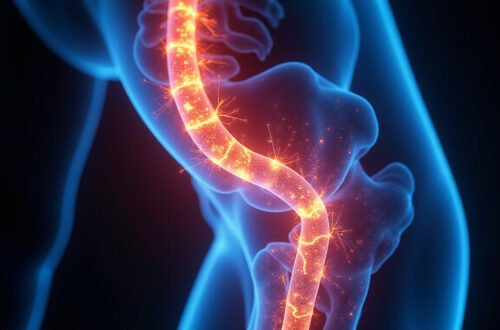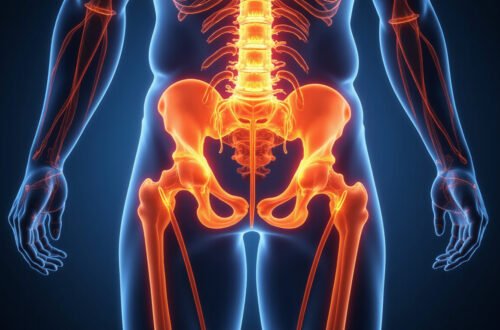Lumbar nerve roots play a critical role in connecting the spinal cord to the lower body, enabling movement and sensation in the legs, feet, and pelvic region. Understanding lumbar nerve roots is essential for anyone experiencing lower back pain, numbness, or weakness, as these symptoms often stem from irritation or damage to these nerves. This article delves into what lumbar nerve roots are, common causes of their dysfunction, and the most effective treatments available today.
What Are Lumbar Nerve Roots?
Lumbar nerve roots are the nerves that emerge from the lower part of the spinal cord, specifically from the lumbar region of the spine, which consists of five vertebrae labeled L1 through L5. These nerve roots exit the spinal canal through openings called foramina and branch out to innervate muscles, skin, and joints of the lower body.
Each lumbar nerve root corresponds to a specific region of the lower body—this mapping is called a dermatome. For example, the L4 nerve root influences the front of the thigh and knee area, while L5 controls parts of the lower leg and foot. Damage or compression of these nerve roots can cause radiculopathy, often known as sciatica, characterized by pain, numbness, or weakness along the nerve’s pathway.
Key Causes of Lumbar Nerve Root Problems
Issues affecting lumbar nerve roots result primarily from compression, inflammation, or injury to the nerves or the structures surrounding them. Some common causes include:
1. Herniated Disc
One of the most frequent causes of lumbar nerve root compression is a herniated disc. The intervertebral discs, which act as cushions between the vertebrae, can tear or bulge out, pressing against a nearby nerve root. This pressure results in sharp, radiating pain often felt down the leg.
2. Spinal Stenosis
Spinal stenosis is the narrowing of the spinal canal or foramina, often due to age-related degeneration such as bone spurs or thickened ligaments. This narrowing compresses the lumbar nerve roots, causing pain, tingling, or weakness in the legs.
3. Degenerative Disc Disease
As discs naturally wear down with age, they lose height and hydration, decreasing the space between vertebrae. This reduces cushioning and can lead to nerve root irritation and inflammation.
4. Spondylolisthesis
This condition involves the forward displacement of one vertebra over another, potentially pinching nerve roots. It frequently affects the lumbar spine and can cause chronic lower back pain and nerve symptoms.
5. Trauma and Injury
Accidents or falls can cause fractures, ligament sprains, or nerve damage affecting lumbar nerve roots. Immediate symptoms might be severe, requiring prompt medical attention.
6. Tumors or Infections
Although less common, tumors or infections near the lumbar spine can compress nerve roots directly, causing neurological symptoms.
Signs and Symptoms of Lumbar Nerve Root Compression
Recognizing the symptoms linked with lumbar nerve roots is crucial for early intervention. Common signs include:
- Radiating pain down one or both legs (sciatica)
- Numbness or tingling in the legs or feet
- Muscle weakness in the lower limbs
- Reflex changes such as diminished knee or ankle reflexes
- Burning or sharp sensations along the nerve pathway
- Difficulty walking or standing for prolonged periods
If these symptoms persist or worsen, it is important to seek professional evaluation.
Diagnostic Approaches for Lumbar Nerve Root Issues
Diagnosing problems related to lumbar nerve roots typically involves:
- Medical History and Physical Exam: Assessing symptoms, reflexes, muscle strength, and nerve function.
- Imaging Tests: MRI is the gold standard for visualizing soft tissues including discs, nerves, and spinal cord. CT scans and X-rays can reveal bone abnormalities and alignment issues.
- Electrodiagnostic Tests: Nerve conduction studies (NCS) and electromyography (EMG) help assess nerve damage and muscle function.
These diagnostic tools help pinpoint the exact cause and level of nerve root involvement to tailor effective treatment.

Effective Treatments for Lumbar Nerve Root Disorders
Treatment depends on the severity of symptoms and underlying cause. Options range from conservative therapies to surgical intervention.
Conservative Treatments
Many patients respond well to non-surgical management including:
- Physical Therapy: Tailored exercises strengthen the back muscles, improve flexibility, and relieve nerve pressure.
- Medications: Nonsteroidal anti-inflammatory drugs (NSAIDs), muscle relaxants, and nerve pain medications can reduce inflammation and pain.
- Epidural Steroid Injections: Corticosteroid injections near the nerve roots reduce inflammation and offer temporary relief.
- Lifestyle Modifications: Weight loss, ergonomic adjustments, and avoiding prolonged sitting or heavy lifting decrease nerve stress.
Surgical Options
Surgery is considered when conservative treatments fail or neurological deficits worsen. Common procedures include:
- Microdiscectomy: Removal of herniated disc material pressing on a nerve root.
- Laminectomy: Removal of part of the vertebra to widen the spinal canal and relieve pressure.
- Spinal Fusion: Stabilization of vertebrae in cases of spondylolisthesis or severe degeneration.
Advances in minimally invasive surgery have improved recovery times, and spine surgeons can customize approaches based on individual patient factors.
Lifestyle Tips for Maintaining Healthy Lumbar Nerve Roots
Preventive care can reduce the risk of lumbar nerve root problems:
- Maintain a healthy weight to reduce pressure on the spine.
- Practice good posture when sitting, standing, and lifting.
- Stay active with low-impact exercises such as walking, swimming, or yoga.
- Avoid smoking, as it decreases blood flow to spinal tissues, impairing healing.
- Use ergonomic furniture and supportive mattresses to reduce strain.
Frequently Asked Questions (FAQs)
What causes pain in the lumbar nerve roots?
Pain arises primarily from compression or irritation caused by herniated discs, spinal stenosis, or degeneration that affects the nerve roots in the lumbar spine.
How can lumbar nerve root compression be diagnosed?
Diagnosis involves physical exams, MRI imaging for soft tissue and nerve visualization, and sometimes nerve conduction studies to assess nerve function.
Are there effective nonsurgical treatments for lumbar nerve root problems?
Yes, many patients find relief through physical therapy, medications, epidural steroid injections, and lifestyle changes, making surgery unnecessary in most cases.
Conclusion: Take Charge of Your Spinal Health Today
Understanding lumbar nerve roots is the first step toward identifying and managing symptoms that can profoundly affect quality of life. Whether caused by herniated discs, spinal stenosis, or other conditions, treatments now offer hope for relief and recovery through a combination of modern medicine and lifestyle adjustments. If you experience persistent lower back pain, numbness, or weakness, don’t wait to seek evaluation—a timely diagnosis can prevent long-term complications and help you regain your mobility and comfort. Take control of your spinal health now by consulting a healthcare professional and exploring personalized treatment options.
For further reading on lumbar nerve root health and spinal care, visit the American Academy of Orthopaedic Surgeons website.






